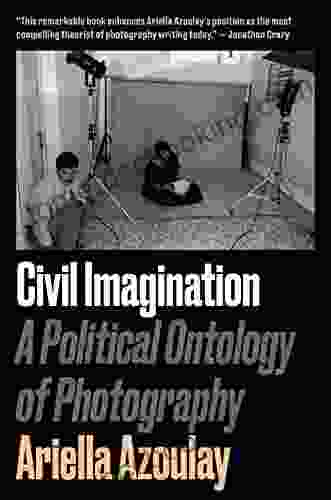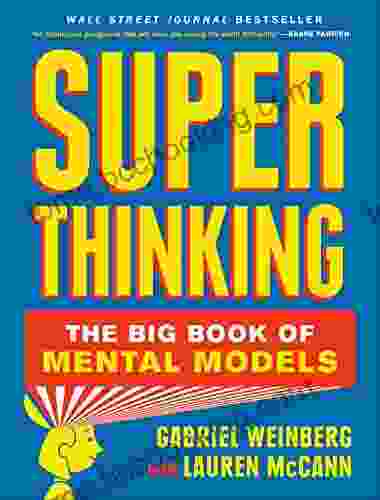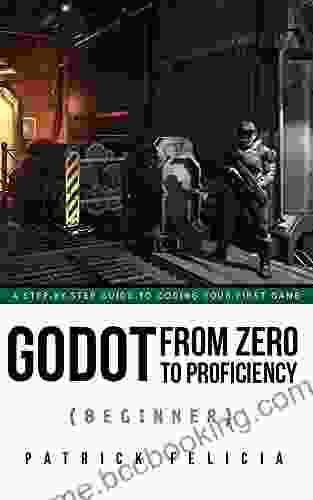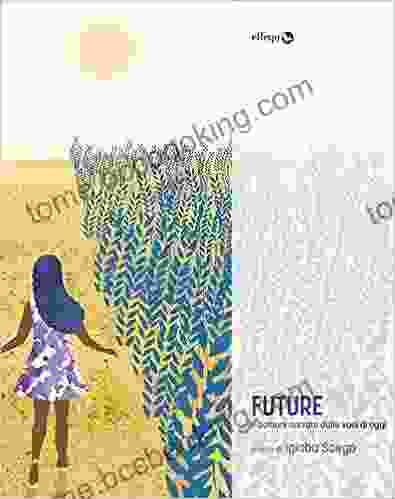Civil Imagination: Exploring the Political Ontology of Photography

4 out of 5
| Language | : | English |
| File size | : | 7346 KB |
| Text-to-Speech | : | Enabled |
| Screen Reader | : | Supported |
| Enhanced typesetting | : | Enabled |
| Print length | : | 290 pages |
In her groundbreaking book, Civil Imagination: Political Ontology of Photography, Ariella Azoulay challenges the traditional understanding of photography as a neutral medium of representation. She argues that photography is instead a constitutive force in the construction of political realities.
Azoulay's work is based on the premise that photography is not simply a way of recording the world but also a way of shaping it. Images, she argues, do not merely reflect reality but also actively participate in its production.
This has profound implications for our understanding of power, identity, and social change. As Azoulay shows, photography has been used throughout history to both reinforce and challenge existing power structures. It has been used to document both violence and resistance, to create both fear and hope.
In Civil Imagination, Azoulay offers a new way of thinking about photography's role in politics. She argues that photography is not simply a tool for documenting or representing the world but also a way of imagining and creating new possibilities.
Key Concepts
Civil Imagination introduces a number of key concepts that are essential for understanding Azoulay's argument. These include:
- The civil contract: Azoulay argues that photography is a constitutive part of the civil contract. This contract is an agreement between citizens that establishes the terms of their coexistence. Photography plays a key role in this contract by providing a shared visual record of the world.
- The political imaginary: The political imaginary is a set of images and ideas that shape our understanding of the world. These images and ideas are often produced and circulated through photography.
- Civil society: Civil society is the realm of public life that is not controlled by the state. Azoulay argues that photography is an essential part of civil society, as it provides a space for citizens to come together and imagine new possibilities.
Theory and Practice
Civil Imagination is not only a theoretical work but also a practical one. Azoulay provides a number of examples of how photography has been used to create new political possibilities. These examples include:
Throughout her book, Azoulay offers a powerful and challenging account of photography's role in politics. Civil Imagination is a must-read for anyone interested in understanding the relationship between photography and social change.
Reviews
- "Civil Imagination is a brilliant and original work that challenges our understanding of photography's role in politics. Azoulay provides a new way of thinking about the relationship between images and power." - Susan Sontag
- "Civil Imagination is a groundbreaking book that will change the way we think about photography. Azoulay's work is essential reading for anyone interested in understanding the relationship between photography and social change." - Edward Said
- "Civil Imagination is a powerful and challenging account of photography's role in politics. Azoulay's work is a must-read for anyone interested in understanding the relationship between photography and social change." - John Berger
Civil Imagination is a powerful and provocative book that offers a new way of thinking about photography's role in politics. Azoulay's work is a must-read for anyone interested in understanding the relationship between photography and social change.
4 out of 5
| Language | : | English |
| File size | : | 7346 KB |
| Text-to-Speech | : | Enabled |
| Screen Reader | : | Supported |
| Enhanced typesetting | : | Enabled |
| Print length | : | 290 pages |
Do you want to contribute by writing guest posts on this blog?
Please contact us and send us a resume of previous articles that you have written.
 Book
Book Novel
Novel Page
Page Chapter
Chapter Text
Text Story
Story Genre
Genre Reader
Reader Library
Library Paperback
Paperback E-book
E-book Magazine
Magazine Newspaper
Newspaper Paragraph
Paragraph Sentence
Sentence Bookmark
Bookmark Shelf
Shelf Glossary
Glossary Bibliography
Bibliography Foreword
Foreword Preface
Preface Synopsis
Synopsis Annotation
Annotation Footnote
Footnote Manuscript
Manuscript Scroll
Scroll Codex
Codex Tome
Tome Bestseller
Bestseller Classics
Classics Library card
Library card Narrative
Narrative Biography
Biography Autobiography
Autobiography Memoir
Memoir Reference
Reference Encyclopedia
Encyclopedia Fedor G Pikus
Fedor G Pikus Edward Segal
Edward Segal Eithne Loughrey
Eithne Loughrey Edward Achorn
Edward Achorn Ed Duncan
Ed Duncan Elizabeth Powell Crowe
Elizabeth Powell Crowe E T Bryant
E T Bryant Eboo Patel
Eboo Patel Marjorie E Scaffa
Marjorie E Scaffa Elizabeth Currie
Elizabeth Currie Dzongsar Jamyang Khyentse
Dzongsar Jamyang Khyentse Tim Powers
Tim Powers Elaine Thorp
Elaine Thorp Eleanor J Sullivan
Eleanor J Sullivan Gina Mayer
Gina Mayer Jonathan Hemus
Jonathan Hemus Dwight E Neuenschwander
Dwight E Neuenschwander Yaron Seidman
Yaron Seidman Elizabeth Barlow Rogers
Elizabeth Barlow Rogers Eileen Kane
Eileen Kane
Light bulbAdvertise smarter! Our strategic ad space ensures maximum exposure. Reserve your spot today!
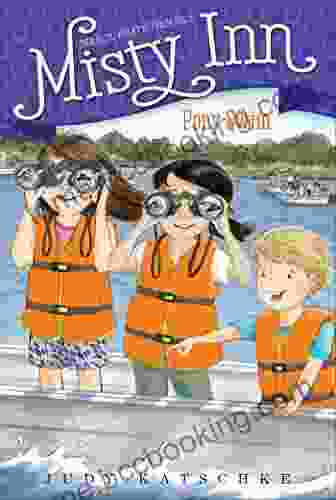
 Colton CarterDive into the Unforgettable Adventure of Pony Swim: Marguerite Henry's Misty...
Colton CarterDive into the Unforgettable Adventure of Pony Swim: Marguerite Henry's Misty...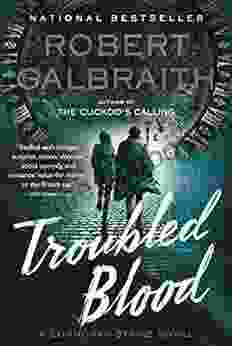
 Franklin BellUnravel the Spine-Tingling Mystery in Troubled Blood: A Gripping Cormoran...
Franklin BellUnravel the Spine-Tingling Mystery in Troubled Blood: A Gripping Cormoran... Natsume SōsekiFollow ·19.4k
Natsume SōsekiFollow ·19.4k Ervin BellFollow ·9.2k
Ervin BellFollow ·9.2k Jake CarterFollow ·11.6k
Jake CarterFollow ·11.6k Andy HayesFollow ·2.3k
Andy HayesFollow ·2.3k Casey BellFollow ·12.1k
Casey BellFollow ·12.1k Deacon BellFollow ·6.8k
Deacon BellFollow ·6.8k Kenneth ParkerFollow ·18.1k
Kenneth ParkerFollow ·18.1k Patrick HayesFollow ·4.7k
Patrick HayesFollow ·4.7k
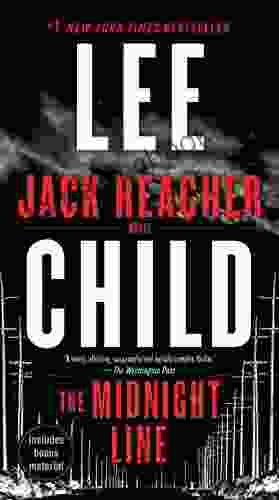
 Clarence Brooks
Clarence BrooksUncover the Secrets in the Dead of Night: Dive into Lee...
Step into the heart-stopping world of Jack...

 Clay Powell
Clay PowellAce the GMAT Grammar Section: Your Last-Minute...
The GMAT is a challenging...
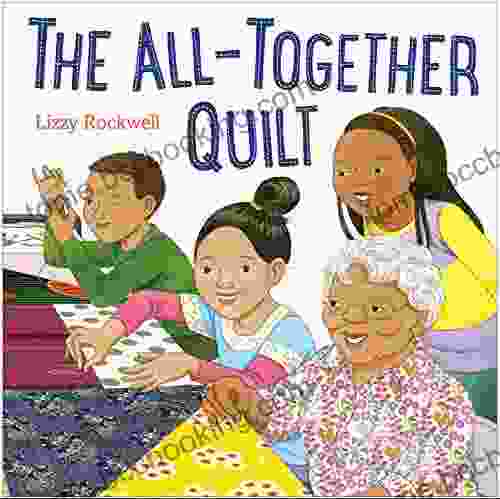
 Salman Rushdie
Salman RushdieEmbark on a Heartwarming Journey with "The All Together...
: Immerse yourself in the charming world of...
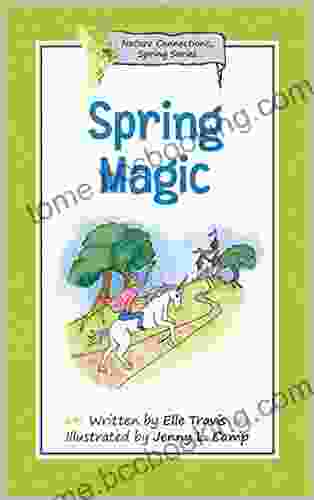
 Dawson Reed
Dawson ReedSpring Magic: Stunningly Illustrated Fun for Kids to...
Welcome to the Enchanting World of...
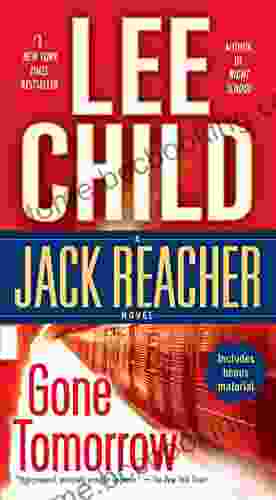
 Bradley Dixon
Bradley DixonGone Tomorrow: A Gripping Thriller by Lee Child that Will...
In the literary realm of thrillers, few...
4 out of 5
| Language | : | English |
| File size | : | 7346 KB |
| Text-to-Speech | : | Enabled |
| Screen Reader | : | Supported |
| Enhanced typesetting | : | Enabled |
| Print length | : | 290 pages |


